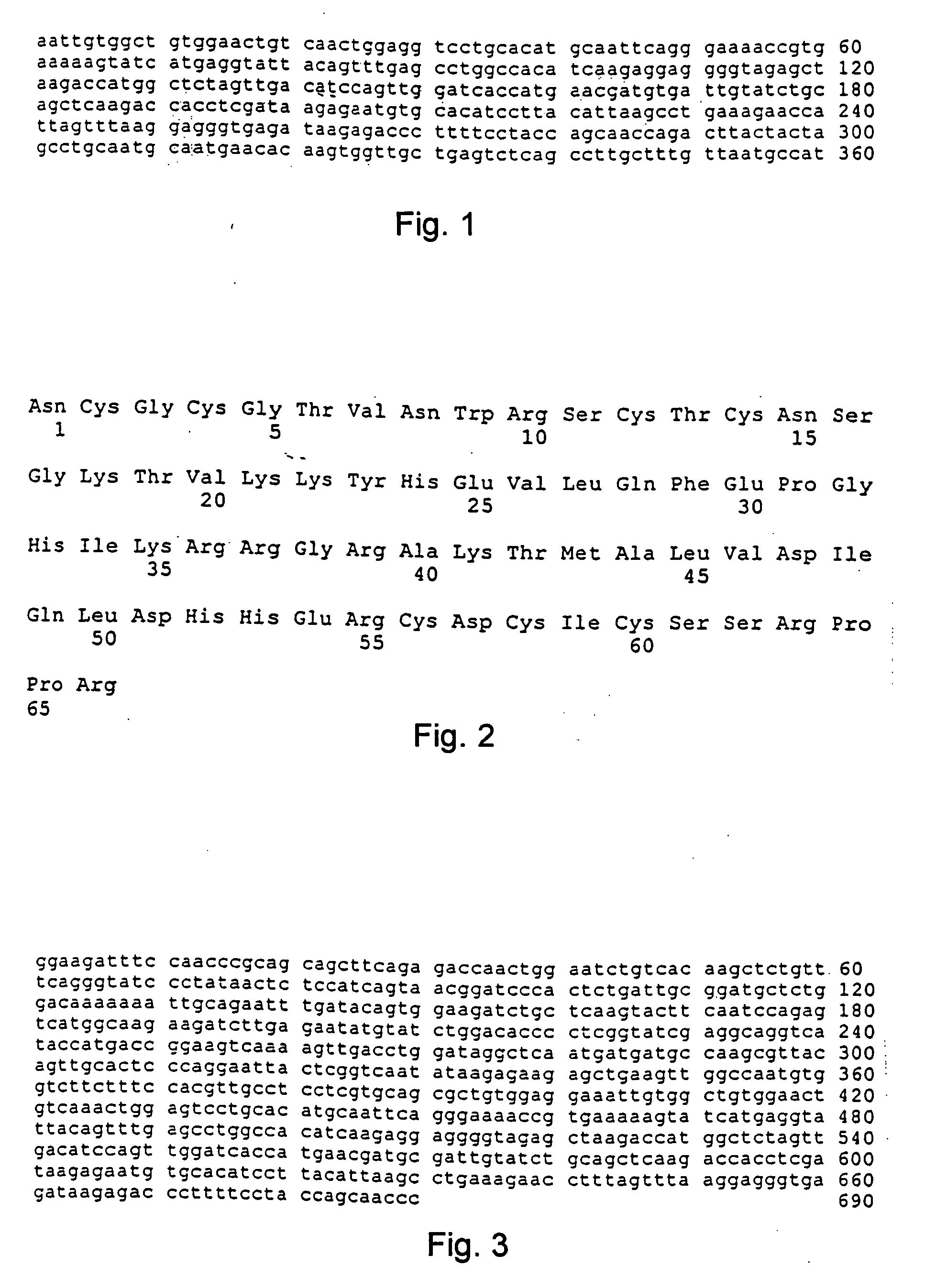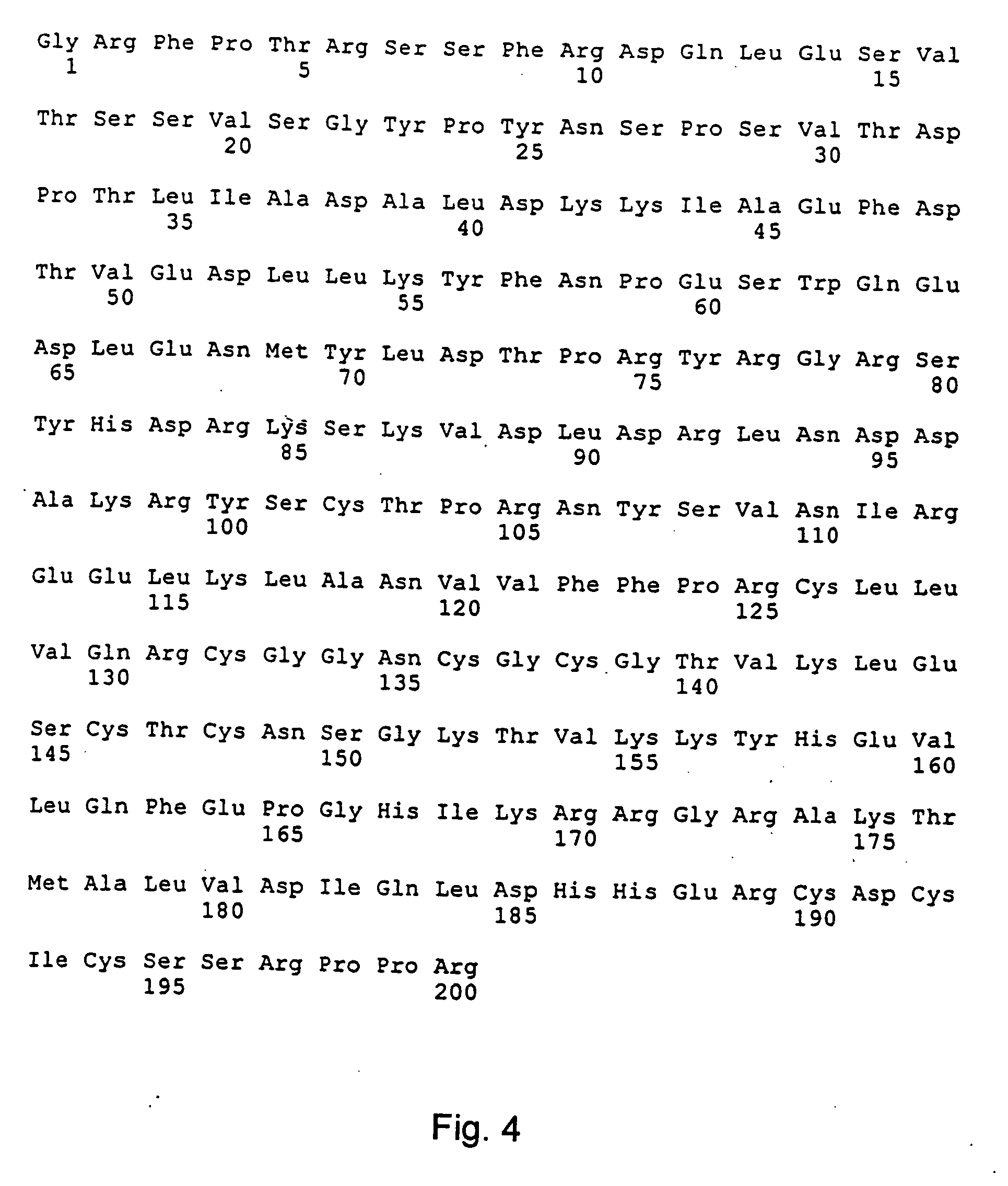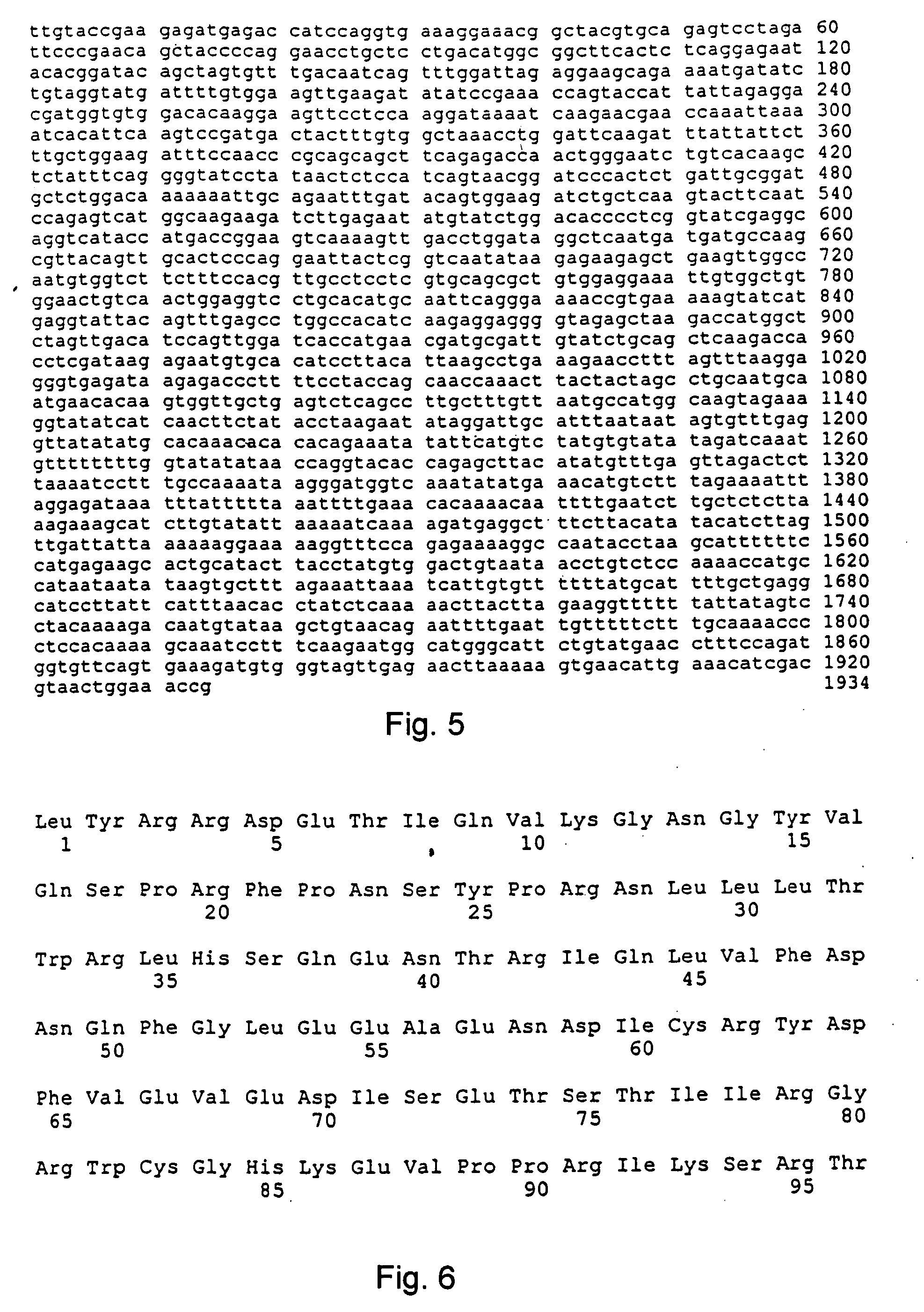Platelet-derived growth factor D, DNA coding therefor, and uses thereof
a growth factor and platelet technology, applied in the field of platelet-derived growth factor d, can solve the problems of cardiovascular failure, fluid accumulation in the pericardial cavity, and embyonic lethality around midgestation, and achieve the effect of efficient high-volume screening
- Summary
- Abstract
- Description
- Claims
- Application Information
AI Technical Summary
Benefits of technology
Problems solved by technology
Method used
Image
Examples
example 1
Expression of Human PDGF-D in Baculovirus Infected Sf9 Cells
[0129] The portion of the cDNA encoding amino acid residues 24-370 of SEQ ID NO:8 was amplified by PCR using Taq DNA polymerase (Biolabs). The forward primer used was 5′GATATCTAGAAGCAACCCCGCAGAGC 3′ (SEQ ID NO:33). This primer includes a XbaI site (underlined) for in frame cloning. The reverse primer used was 5′ GCTCGAATTCTAAATGGTGATGGTGATGATG TCGAGGTGGTCTTGA 3′ (SEQ ID NO:34). This primer includes an EcoRI site (underlined) and sequences coding for a C-terminal 6×His tag preceded by an enterokinase site. The PCR product was digested with XbaI and EcoRI and subsequently cloned into the baculovirus expression vector, pAcGP67A. Verification of the correct sequence of the cloned PCR product was done by nucleotide sequencing. The expression vectors were then co-transfected with BaculoGold linearized baculovirus DNA into Sf9 insect cells according to the manufactures protocol (Pharmingen). Recombined baculovirus were amplified ...
example 2
Generation of Antibodies to Human PDGF-D
[0132] Rabbit antisera against full-length PDGF-DD and against a synthetic peptide derived from the PDGF-D sequence (residues 254-272, amino acid sequence RKSKVDLDRLNDDAKRYSC of SEQ ID NO:36) were generated. These peptides were each conjugated to the carrier protein keyhole limpet hemocyanin (KLH, Calbiochem) using N-succinimidyl 3-(2-pyridyldithio)propionate (SPDP) (Pharmacia Inc.) according to the instructions of the supplier. 200-300 micrograms of the conjugates in phosphate buffered saline (PBS) were separately emulsified in Freunds Complete Adjuvant and injected subcutaneously at multiple sites in rabbits. The rabbits were boostered subcutaneously at biweekly intervals with the same amount of the conjugates emulsified in Freunds Incomplete Adjuvant. Blood was drawn and collected from the rabbits. The sera were prepared using standard procedures known to those skilled in the art. The antibodies to full-length PDGF-DD were affinity-purifie...
example 3
Expression of PDGF-D Transcripts
[0134] To investigate the tissue expression of PDGF-D in several human tissues, a Northern blot was done using a commercial Multiple Tissue Northern blot (MTN, Clontech). The blots were hybridized at according to the instructions from the supplier using ExpressHyb solution at 68° C. for one hour (high stringency conditions), and probed sequentially with a 32P-labeled 327 bp PCR-generated probe from the human fetal lung cDNA library (see description above) and full-length PDGF-B cDNA. The blots were subsequently washed at 50° C. in 2×SSC with 0.05% SDS for 30 minutes and at 50° C. in 0.1×SSC with 0.1% SDS for an additional 40 minutes. The blots were then put on film and exposed at −70° C. As shown in FIG. 15, upper panel, the highest expression of a major 4.4 kilobase (kb) transcript occurred in heart, pancreas and ovary while lower expression levels were noted in several other tissues including placenta, liver, kidney, prostate, testis, small intesti...
PUM
| Property | Measurement | Unit |
|---|---|---|
| pH | aaaaa | aaaaa |
| temperature | aaaaa | aaaaa |
| pH | aaaaa | aaaaa |
Abstract
Description
Claims
Application Information
 Login to View More
Login to View More - R&D
- Intellectual Property
- Life Sciences
- Materials
- Tech Scout
- Unparalleled Data Quality
- Higher Quality Content
- 60% Fewer Hallucinations
Browse by: Latest US Patents, China's latest patents, Technical Efficacy Thesaurus, Application Domain, Technology Topic, Popular Technical Reports.
© 2025 PatSnap. All rights reserved.Legal|Privacy policy|Modern Slavery Act Transparency Statement|Sitemap|About US| Contact US: help@patsnap.com



